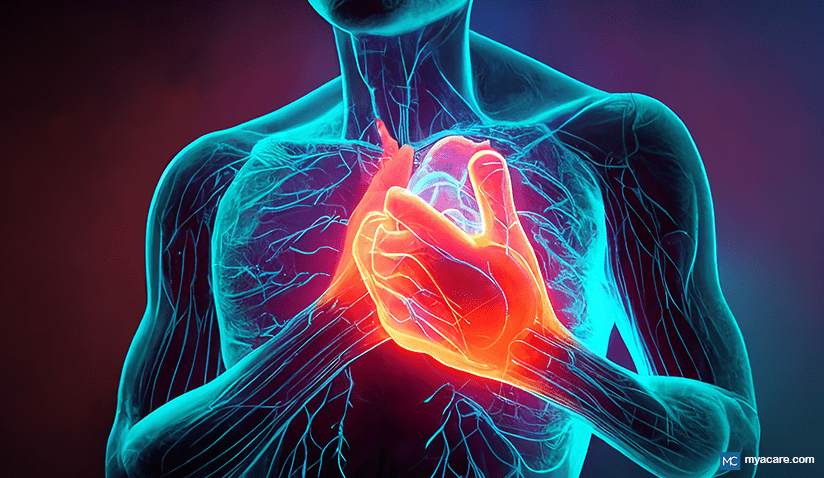Insulin Therapy: Solution of Diabetes
Insulin is a natural hormone produced by the pancreas that enables the body to utilize glucose. However, in diabetes body is either unable to produce insulin or utilize the insulin for cellular uptake of glucose. In either case the doctor recommends to start artificially produced insulin, which regulates the blood sugar level that curbs diabetes. It is important to know that in some cases of diabetes or insulin resistant your doctor will not start insulin therapy immediately. Treatment will include medications such as metformin or Ozempic depending on your random and fasting blood sugar and HBA1C.
Which Types of Insulin are Available:
Rapid-acting:
This type of insulin is paired with long-acting insulin and is consumed before meal. Its action begins in about 15 minutes and lasts for 1 to 5 hours, depending on the pharmaceutical company.
Short-acting:
It should be taken approximately 30 to 60 minutes before a meal. It is commonly known as regular insulin; this form takes about 30 minutes to work fully and lasts 3 to 8 hours.
Intermediate-acting:
This type of insulin starts working in an hour or two, and takes 2 to 4 hours to reach peak effect. Often combined with rapid or short-acting insulin. Intermediate-acting insulin fulfills the insulin demands of an average human being for about half a day.
Long-acting:
This form provides a full day of insulin coverage. It is recommended to use a shorter-acting type of insulin with it.
Premixed:
There are several forms of premixed insulin, including Humulin, Novolog, and others. These varieties combine short-acting and intermediate-acting insulins in one bottle or insulin pen, which some people find easier to administer.
Comparative Analysis of Different Types of Insulin
| Type of Insulin | Brand Name(s) | Onset | Peak | Duration | Role in Blood Sugar Management |
| Rapid-acting | Humalog, Novolog, Apidra | 10-30 minutes | 30 minutes - 3 hours | 3-5 hours | Used for meal-time blood sugar control; quick onset and short duration. |
| Short-acting | Humulin R, Novolin R | 30 minutes - 1 hour | 2-5 hours | Up to 12 hours | Used for meal-time blood sugar control; slightly longer onset and duration. |
| Intermediate-acting | Humulin N, Novolin N | 1.5-4 hours | 4-12 hours | Up to 24 hours | Provides basal insulin coverage, often combined with rapid- or short-acting insulin. |
| Long-acting | Lantus, Levemir, Basaglar | 1-4 hours | Minimal/no peak | Up to 24 hours | Provides consistent basal insulin coverage, typically taken once daily. |
| Ultra long-acting | Tresiba | 6 hours | None | Over 24 hours | Provides extended basal insulin coverage, reducing the need for frequent dosing. |
| Pre-mixed | Humalog Mix 75/25, Novolog Mix 70/30, Humulin 70/30 | Varies depending on mixture | Varies | Up to 24 hours | Combines basal and bolus insulin, simplifying regimen by reducing the number of injections. |
How to Administer Insulin:
Insulin Administration via Syringe: A Technical Description
The majority of individuals utilizing insulin therapy employ a syringe as the primary device for injecting the medication into the bodily cavity. A syringe consists of a tubular structure, affixed to a hypodermic needle, designed for the precise delivery of medicinal substances into the human body.
To initiate the injection process, the needle is inserted into a vial containing the insulin solution, and the requisite dosage is withdrawn. Subsequently, the needle is inserted into the patient's or caregiver's body, and the insulin is administered via injection.
Technical Details
- The syringe, a tubular device, serves as the primary conduit for the delivery of insulin into the body.
- The hypodermic needle, attached to the syringe, enables the precise injection of the medication into the bodily cavity.
- The insulin solution is withdrawn from the vial via the needle, allowing for the administration of the correct dosage.
- The needle is inserted into the patient's or caregiver's body, facilitating the injection of the insulin solution.
Insulin Pens: A Novel Approach to Medication Administration
Insulin pens, a variant of the traditional syringe, employ a needle to inject the medication into the bodily cavity. However, unlike syringes, insulin pens are prefilled with insulin, obviating the need for manual filling from a vial. This design feature enables a more streamlined and convenient administration process.
Insulin pens can be categorized into two types: disposable and reusable. Disposable pens are designed for single-use, whereas reusable pens can be refilled with a new cartridge of insulin, thereby extending their lifespan. While insulin pens offer greater convenience compared to syringes, they are generally more expensive to utilize.
Technical Details
- Insulin pens utilize a needle to inject the medication into the bodily cavity, similar to syringes.
- Prefilled with insulin, insulin pens eliminate the need for manual filling from a vial.
- Disposable pens are designed for single-use, whereas reusable pens can be refilled with a new cartridge of insulin.
- Insulin pens offer greater convenience compared to syringes, but are generally more expensive to utilize.
Insulin Pumps: A Wearable, Computerized System for Insulin Administration
Insulin pumps are compact, wearable devices that utilize a computerized system to deliver insulin to the body. These devices consist of a reservoir containing insulin, a tubing system, and a cannula (needle) that is inserted into the subcutaneous tissue. The pump allows for the precise control of insulin delivery, enabling users to tailor their therapy to their individual needs.
The pump can be programmed to deliver a continuous, low-flow rate of insulin throughout the day, as well as administer a bolus dose of insulin in response to meal consumption. This feature enables users to effectively manage their blood glucose levels and maintain optimal glycemic control.
Technical Details
- Insulin pumps are wearable, computerized devices that deliver insulin to the body.
- The pump consists of a reservoir containing insulin, a tubing system, and a cannula (needle) that is inserted into the subcutaneous tissue.
- The pump can be programmed to deliver a continuous, low-flow rate of insulin throughout the day.
- The pump can also administer a bolus dose of insulin in response to meal consumption.
- The device allows for precise control of insulin delivery, enabling users to tailor their therapy to their individual needs.
Inhalers: A Novel Method for Insulin Administration
Inhalers, such as Afrezza, offer an alternative method of insulin administration for individuals utilizing rapid-acting insulin. This innovative technology enables users to inhale the medication directly into the lungs, bypassing the need for injection.
The Afrezza inhaler is a handheld device that is placed in the mouth, allowing the user to breathe in the insulin medication. This process enables the insulin to be absorbed directly into the bloodstream, providing rapid and effective glucose control.
Technical Details
- Afrezza is a rapid-acting insulin inhaler that allows users to inhale the medication directly into the lungs.
- The inhaler is a handheld device that is placed in the mouth, allowing the user to breathe in the insulin medication.
- The insulin is absorbed directly into the bloodstream, providing rapid and effective glucose control.
- Afrezza has been available in the United States since 2015.
Optimal Insulin Injection Sites: A Guide to Effective Administration
The location of insulin injection can significantly impact the efficacy and comfort of the treatment. Research suggests that injecting insulin into the abdominal region yields the most even absorption. The arms, thighs, and buttocks are also suitable alternatives, although the absorption rate may vary.
To minimize the risk of scarring and ensure optimal insulin absorption, it is recommended to:
- Inject insulin at the same general area of the body, but vary the exact injection site.
- Space out injection sites by at least the width of one finger or slightly more, if using an insulin pump.
- Monitor for the development of hard lumps in the injection site, which may indicate scarring and require a change in injection site.
Technical Details
- Injecting insulin into the abdominal region yields the most even absorption.
- Arms, thighs, and buttocks are alternative injection sites, although absorption rates may vary.
- Varying the exact injection site and spacing out injection sites can help minimize scarring.
- Monitoring for hard lumps in the injection site can indicate scarring and require a change in injection site.
General FAQ about Insulin
- What is insulin? Insulin is a hormone produced by the pancreas that helps regulate blood glucose levels by facilitating the uptake of glucose into cells for energy.
- What are the different types of insulin? There are five main types of insulin: rapid-acting, short-acting, intermediate-acting, long-acting, and premixed.
- How is insulin administered? Insulin is commonly administered via injections using syringes, insulin pens, or insulin pumps.
- What is the role of insulin in diabetes management? Insulin therapy helps individuals with diabetes maintain blood glucose levels within a target range, preventing hyperglycemia and its complications.
- What factors influence the choice of insulin type? The choice depends on individual needs, lifestyle, meal patterns, and blood glucose monitoring results.
- Can insulin therapy have side effects? Yes, possible side effects include hypoglycemia, weight gain, and injection site reactions.
- How should insulin be stored? Insulin should be stored in a refrigerator until opened. Once opened, it can typically be kept at room temperature for a specified period.
- What should one do if a dose is missed? Consult your healthcare provider for guidance, as the action depends on the type of insulin and timing of the missed dose.
- How does one determine the correct insulin dosage? Dosage is individualized based on blood glucose monitoring, carbohydrate intake, physical activity, and healthcare provider recommendations.
- Can insulin be taken orally? Currently, insulin cannot be taken orally because digestive enzymes break it down before it can be effective.



